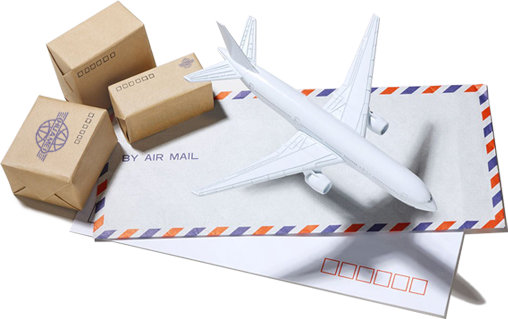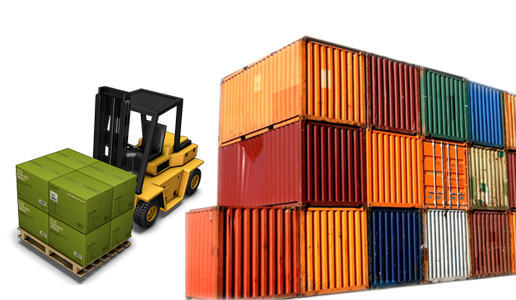Shipping oversized and overweight goods by sea in open top containers from Shenzhen to the United States, Canada, Southeast Asia, customs declaration, clearance, loading, and unloading
Preface: Our company specializes in shipping oversized and overweight cargo from Shenzhen to the United States, Canada, and Southeast Asia via ocean freight services. We offer one-stop customs declaration, clearance, loading, and unloading services, ensuring that goods arrive safely and on time at their destinations. No matter the size of your shipment, we can handle it efficiently with full monitoring to meet your logistics needs.
In today's globalized trade landscape, the demand for transporting super-heavy and oversized cargo is on the rise. Whether it's industrial equipment, mechanical components, or special goods, our open top container shipping export service has become an essential link between Shenzhen and markets in the United States, Canada, Southeast Asia. We understand that each transportation is a stringent test of time and safety. Therefore, we offer comprehensive shipping customs clearance, cargo loading and unloading, and freight forwarding services starting from Shenzhen to ensure your goods arrive at their destination smoothly and efficiently.
Shipping prices and lead times for open top containers to the United States, Canada, Southeast Asia:
Analysis of Ocean Freight Rates and Lead Times for Open Top Containers to the United States, Canada, and Southeast Asia. For ocean freight export services using open top containers (such as open top containers, flat rack containers, and frame containers), especially from China to the United States, Canada, and Southeast Asian regions, the following is a general analysis of rates and lead times:
Price factor:
Cargo Dimensions and Weight: Typically, oversized or overweight cargo will impact shipping costs due to the need for special handling and additional space.
Route Selection: Direct flights usually have higher costs but faster lead times; multimodal transport or transfer routes may have lower fees, but additional transit time and expenses should be considered.
Additional services: Various additional services, including port handling charges, customs clearance fees, insurance premiums, etc., will affect the overall transportation cost.
Destination: Prices vary for major ports in the United States, Canada, Southeast Asian countries, and additional fees may apply for inland destinations.
Container Type: The type of open top container (e.g., open top container, flat rack container, frame container, etc.) affects the price because these types usually cost more than standard dry containers.
Shipping Company: Quotations from different shipping companies may vary, and prices may increase during peak seasons.
Port Charges: This includes loading and unloading fees, port charges, customs clearance fees, etc. The standard of port charges varies from port to port.
Insurance: It is recommended to purchase cargo transportation insurance, with the premium determined by the value of the goods.
Timeliness considerations:
Direct routes: Typically 15-20 days from major Chinese ports to the U.S. West Coast; 25-35 days to the U.S. East Coast; and 20-30 days to major Canadian ports.
Southeast Asia Route: Typically takes 7-15 days, depending on the location of the destination port and the busyness of the route.
Please note that the above prices and lead times are for general reference only, as actual costs may vary due to specific cargo characteristics, port congestion, oil price fluctuations, market supply and demand, and other factors. The pricing and lead time of open top container shipping are influenced by multiple factors, so it is crucial to choose a freight forwarder company with extensive experience and comprehensive services. With years of industry experience and a global network of partners, we can provide you with efficient and reliable logistics solutions to ensure your goods arrive at their destination on time and safely. For accurate quotes and more detailed consultations, it is recommended to directly contact our customer service team for detailed consultation and negotiation.
Customs Clearance Documents and Process for Shipping Open Top Containers:
The customs clearance documents and process for the export of open top containers by sea are relatively complex, involving multiple stages. Ensuring that all documents are complete and the process runs smoothly is crucial for the smooth export of goods. The following is an overview of common customs clearance documents and processes:
Documents Required for Customs Clearance:
Commercial Invoice:
List detailed goods information including item name, quantity, unit price, total price, origin, etc.
The invoice must match the actual goods and be signed or stamped by the exporter.
Packing List:
List detailed packaging information for the goods, including the quantity, weight, and volume of items in each package.
The packing list should match the actual shipment and correspond with the commercial invoice.
Contract or Order:
The contract or order signed by both parties serves as proof of trade.
The contract should clearly specify details about the goods, delivery conditions, payment methods, etc.
B/L by Sea:
The transport contract and delivery receipt issued by the carrier serve as evidence of ownership rights.
The bill of lading must include information such as the shipper, consignee, destination port, and description of the goods.
Certificate of Origin:
Documents proving the country of origin of goods may qualify for tariff preferences. Depending on the destination country and trade agreements, specific formats of certificates of origin (such as FORM A, CO, etc.) may be required.
Export License:
Some countries or specific goods may require an export license, with requirements determined by the destination country and the nature of the goods.
Inspection and quarantine certificate
Some countries or products may require an inspection and quarantine certificate to prove that the goods meet relevant standards.
Insurance policy
If cargo transportation insurance has been purchased, provide the insurance documentation to ensure the safety of the goods during transit.
Relevant documents for open-top container:
Depending on the type of open-top container (such as open-top containers, flat racks, frame containers, etc.), additional documents may be required, such as over-dimensional cargo certificates and cargo securing plans.
Customs clearance processes:
Booking and Container Loading
- Select an appropriate shipping company and voyage, book space, and arrange for container loading.
- Ensure that the loading method for open-top containers meets transportation requirements, especially for oversized and overweight goods.
Customs Clearance Preparation
- Prepare all necessary documents and ensure their authenticity and completeness.
- Submit an export customs declaration to the customs authority, including the commercial invoice, packing list, contract, certificate of origin, etc.
Customs Inspection
- Customs may inspect the goods, including document review and physical inspection.
- If an inspection is required, cooperate with customs to complete the inspection procedures.
Release and Shipping
- After customs clearance, the goods can be loaded onto the ship for transport.
- Obtain the ocean bill of lading and ensure the accuracy of the bill of lading information.
Destination Port Customs Clearance
- Before arriving at the destination port, the consignee or their agent must prepare the necessary documents for destination port customs clearance.
- Documents include the commercial invoice, packing list, ocean bill of lading, certificate of origin, etc.
- The destination port customs may conduct inspections to ensure that the goods match the declarations.
Release and Delivery
- After customs clearance at the destination port, the goods can be delivered to the consignee.
- Arrange inland transportation and delivery to ensure timely arrival at the final destination.
Open-top container ocean export involves multiple stages and specific document preparation. It is crucial to ensure the accuracy and completeness of all documents to guarantee smooth customs clearance. For any questions, it is recommended to consult our customer service or customs clearance team for assistance tailored to your specific situation.
Purchase of open-top container ocean freight export insurance
In the process of exporting goods via open-top container shipping, cargo insurance is a crucial step to ensure safety and mitigate risks. Given that open-top containers typically involve oversized and overweight items, they face higher risks during transportation. Therefore, purchasing appropriate insurance is particularly important. Here is a detailed guide for buying marine export insurance:
Insurance type:
Full risks:
Coverage: Comprehensive insurance typically covers almost all possible risks, including maritime risks (such as shipwrecks, collisions, fires, sinking, etc.), accidental incidents (such as damage during loading and unloading), as well as theft and loss.
Applicable scenarios: Suitable for high-value goods with significant transportation risks, especially oversized and heavy equipment in open-top containers.
Water insurance:
- Coverage: Covers losses caused by maritime risks (such as shipwrecks, fires, etc.) and accidents, but does not include general wear and tear or minor damages.
- Applicable scenarios: Suitable for marine cargo insurance of general goods. However, when transporting with open-top containers, it is usually recommended to choose comprehensive insurance for more extensive coverage.
War risks:
- Security scope: Covering losses caused by special risks such as war, hostilities, piracy, etc.
- Applicable scenarios: Suitable for transportation where there may be war risks or unstable areas.
Supplementary insurance
- Protection scope: Additional protections selected according to specific needs, such as strike insurance, common average loss insurance, pick-up insurance, etc.
- Applicable scenarios: Choose according to the special needs of the goods or special risks of the transportation route.
Insurance Purchasing Processes:
Evaluate the value of the goods
- Determine the actual value of the goods (including cost, freight, and insurance) since the insurance amount must cover all these expenses.
Choose an insurance company
- Select a reputable insurance company with extensive experience, especially those with a global service network and expertise in handling open-top container transportation insurance.
Provide necessary information
- Provide detailed information about the goods to the insurance company, including the item name, quantity, weight, dimensions, destination, and mode of transport.
- Supply commercial invoices, packing lists, bills of lading, and other documents to enable the insurer to assess risk and calculate premiums.
Determine insurance terms
- Negotiate and determine insurance terms with the insurance company, including the type of insurance, coverage scope, deductible (if applicable), and insurance amount.
Pay the premium
- Pay the premium based on the insurer's quote, which is usually calculated based on the value of the goods and the chosen type of insurance.
Obtain the policy
- After paying the premium, the insurance company will provide formal policy documents (Insurance Policy) to ensure that the policy information is accurate.
Important Notes
1. Insurance Amount
- Ensure that the insurance amount is sufficient to cover the actual value of the goods to avoid losses due to underinsurance.
2. Deductible
- Understand the deductible provisions in the insurance policy and choose an appropriate deductible to reduce premiums.
3. Special Clauses
- If the goods are transported in open-top containers, confirm whether the insurance policy covers special risks associated with such transportation, such as over-height, over-width, and over-weight issues.
4. Immediate Reporting
- In case of loss during transportation, report it immediately to the insurance company and provide detailed loss documents and proof materials.
5. Claim Process
- Familiarize yourself with the insurance company's claim process, including time limits for claims and required documents, to ensure timely and smooth claims in case of loss.
Purchasing open-top container ocean export insurance is an important risk management measure to ensure the safety of goods during transportation. By choosing the appropriate type of insurance, communicating fully with the insurance company, and following the correct purchase process, you can effectively reduce transportation risks and ensure the safe arrival of goods at their destination. For more detailed insurance consultations or assistance, please contact our customer service team, and we will provide professional insurance services and solutions.
Open-top container sea export packaging requirements:
Sea export using open-top containers involves transporting oversized and overweight goods, so the packaging requirements are very strict to ensure the safety and integrity of the cargo during transportation. Here is a detailed explanation of the open-top container sea export packaging requirements:
Principles for packaging:
1. Safety and Stability
- The packaging must withstand various risks during sea transport, including rough seas, temperature changes, humidity effects, and impacts and compression during loading and unloading.
- Ensure that the goods are securely fixed within the container and will not be damaged due to movement during transportation.
2. Waterproof and Moisture-proof
- Sea transport may encounter bad weather; the packaging must have waterproof and moisture-proof functions to protect the goods from water stains and dampness.
- Use moisture-proof materials (such as moisture barriers, desiccants) for additional protection of moisture-sensitive goods.
3. Shockproof and Impact-resistant
- During open-top container transport, goods may undergo multiple loading and unloading processes; the packaging needs shockproof and impact-resistant features to reduce vibration and impact on the goods during transportation.
- Wrap and secure the goods with cushioning materials (such as foam, bubble wrap, wood shavings, etc.).
4. Clear Labeling
- The packaging must clearly indicate the name, quantity, weight, volume, sender, recipient information, destination, and other details of the goods.
- Use internationally recognized labels and symbols to ensure that dockworkers can correctly identify and handle the goods.
Packaging requirements for different types of goods:
1. Machinery Equipment
- Outer Packaging: Use sturdy wooden crates or iron boxes to ensure the box structure is robust and can withstand pressure and impact during transportation.
- Internal Fixation: Secure the equipment inside the box with wooden frames, pallets, or metal brackets to prevent movement during transit.
- Shock Absorption Materials: Fill the space between the equipment and the packaging box with cushioning materials such as foam or bubble wrap to reduce vibrations during transport.
2. Heavy Equipment
- Base Design: Design a special base or support for heavy equipment to ensure stability and reliability during transportation.
- Securing Devices: Use steel cables, nylon straps, or metal brackets to firmly secure the equipment inside an open-top container, preventing sliding or tipping during transit.
- Shock Absorption Measures: Place shock-absorbing pads or rubber pads between the base and the equipment to minimize the impact of vibrations on the equipment.
3. Oversized Equipment
- Open-Top Containers or Frame Containers: Oversized equipment is typically transported in open-top containers or frame containers, with packaging ensuring safe loading, unloading, and transportation.
- Windproof Securing: When transporting in open-top containers, cover the equipment with canvas or windproof material and secure it tightly with ropes to prevent the effects of sea winds.
-Special Brackets: Design special brackets and securing devices for ultra-wide or ultra-high equipment to ensure stability and reliability during transportation.
4. Electronic Equipment
- Anti-static Materials: Wrap electronic equipment with anti-static packaging materials to prevent damage from static electricity.
-Waterproof and Moisture-proof: Treat electronic equipment for water and moisture resistance, wrapping it in moisture-proof bags or films.
-Internal Fixation: Fill the interior of the packaging box with sponge or foam materials to ensure the stability of the equipment during transportation.
Selection for Packaging Materials:
Internal Inspection
- Before loading the goods into the box, check if the internal packaging is intact, if there is sufficient cushioning material, and if the equipment is securely fixed.
External Inspection
- Check if the external packaging box is undamaged, if the labels are clear, and if waterproof and moisture-proof measures are in place.
Reinforcement and Sealing
- After packing, reinforce the packaging box with steel straps, plastic bands, or ropes to ensure it does not loosen or break during transportation.
- Seal the box body with waterproof tape or sealing tape to prevent water from entering.
Photographing and Recording
- Take photos of the goods before and after packing to keep images of the packaging status, which can serve as evidence in case of issues.
The packaging requirements for open-top container sea export are strict, involving various factors and technologies to ensure the safe arrival of goods in complex transportation environments. By following the above packaging principles and requirements and choosing suitable packaging materials and methods, you can effectively reduce transportation risks and protect the integrity and safety of the goods. For more detailed packaging consultation or services, please contact our customer service team at any time, and we will provide you with professional packaging solutions and technical support.
Open-top container sea export service content
Our open-top container sea export service for oversized large equipment includes: warehousing, loading and unloading, securing, reinforcement, consolidation, trucking, transshipment, document preparation, departure station customs clearance, port transfer, plan application, and road-to-rail intermodal transport services at various railway ports, along with accurate cargo tracking services.
Choosing our open-top container sea export service means choosing professionalism, safety, and efficiency. We promise that regardless of the size or weight of your goods, they will receive the most meticulous handling and monitoring. From Shenzhen to the United States, Canada, Southeast Asia, we provide full escort to ensure your goods arrive safely and on time. Let's join hands and embark on a new chapter in global trade together.











